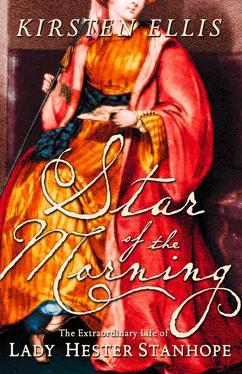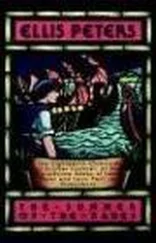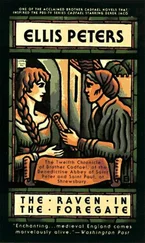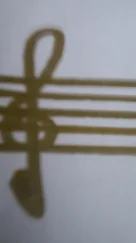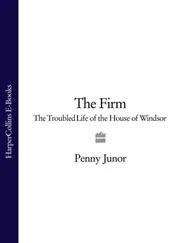It was not surprising that Charles’s intended plan was to go into politics. His closest male friendship was with his cousin, Hester Pitt’s brother, William. Although Charles was six years older than William, they marvelled at how alike they were. At that time, both young men held similar idealistic views, reading Adam Smith and Thomas Paine, brooding critically about society, the rights of the common man, and the need for parliamentary reform. Yet where Charles was frequently impetuous, even zealous, William tended towards caution and reserve.
In October 1774, several months after his return from Geneva, and just weeks before his marriage, Charles, as Lord Mahon, unsuccessfully contested the seat for the City of Westminster. His candidature as a radical had been warmly endorsed by the Lord Mayor elect, John Wilkes, the popularist radical. But his defeat did not appear to put any damper on the couple’s wedding on 19 December that same year. The Reverend Francis Fawke presided, a great friend to both Dr Johnson and Lord Chatham, and he read aloud a little composition of his own:
When gentle hearts in faithful union join
And mix the Hero with the Patriot’s line
With every charm uniting every grace
And all the virtues of the Temple race
The happy omen we with joy admit
And bless the match of Stanhope and of Pitt.
Hester, or Hetty as she was often called, was handed over to the servants in her first month of life. Chevening was Hester’s first playground, set amid a swathe of parkland and carefully cultivated pleasure grounds, requiring a small army of servants, farmers, foresters and seasonal hop-pickers. It would been difficult for an impressionable young mind not to be struck by the sweeping entrance hall with its great wooden staircase, which was a hymn to weaponry, bristling with rifles, bayonets and daggers, crosshatched into geometric decorations across the walls, the pièce de résistance a whorl of tightly packed rifles from which a giant lantern hung suspended from the ceiling.
Hester grew accustomed to the excitement of frequent guests and the constant presence of servants. It was obvious to her, even when she was very small, that her family name was something to be proud of. In the kitchen, linen-capped servants scurried about under a giant iron-worked ‘S’ – for Stanhope – set in a coronet in a pentagram on the wall, under a ceiling as high as a church.
Although they did not realize it, Hester’s parents would never be happier. Since his marriage, Lord Mahon had been content to let his charming, pretty wife take charge of their social life. From their new Harley Street house, which they moved to shortly after Hester’s birth (then a smart residential address before the doctors invaded around the turn of the nineteenth century), the young couple enjoyed an enviable town life, with their own carriage and a household staff. As a member of the Royal Society, Mahon frequently haunted the Society’s club, and held regular meetings and scientific demonstrations. He was well known to the Society’s members, eminent scientists and philosophers such as William Watson, Joseph Priestley, and Dr Richard Price. The brilliant naturalist Sir Joseph Banks, shortly to be elected the Royal Society’s president, became his particularly close friend. *
Hester was raised in a household busy with scientific discussions and political debate, talk of playhouses and the season, fashionable masquerades and dinner parties. The Mahons thrived on concert-going: Mozart, J. C. Bach and Haydn were all then working in London. The house at Harley Street was often a second home for the Pitts; Harriot came to live with them there, and William visited when he could from Cambridge.
Throughout Lady Mahon’s second pregnancy, the young family spent more time at Chevening, where Charles was engrossed in his latest experiments. One quest was to strike upon the best method of fire-proofing, and he hit upon a technique that involved the suctioning-out of air, based on the principle that when a quantity of oxygen is removed, there can be no fire. A grand demonstration took place in the grounds at Chevening, attended by some of London’s greats, including the Royal Society president Sir John Pringle. With his parents looking on, Charles invited his guests to sit on a row of chairs he had placed on the second floor of the small wooden building he had constructed in the estate grounds. With a show of theatrical display he set torches to the lower room, the floors of which he had strewn with a highly combustible mixture of wood shavings and dried faggots mixed with chips of coal. As he described it himself, when the fire took hold, ‘the heat was so intense that the glass of the windows was melted like so much common sealing wax and ran down in drops; yet the flooring boards of that very room were not burnt through; nor was one of the side-timbers, flooring-joints or ceiling-joists damaged in the smallest degree’. It was deemed a brilliant success.
When she was not shuttling back and forth to London, Lady Mahon was hard at work assisting her husband. William Pitt gossiped to his mother that he hoped to see his sister ‘as soon as she can find a leisure moment. Her great business is that of secretary to Lord Mahon, whose “Electricity” is nearly ready for the press and will rank him, I suppose, with Dr Franklin.’ Charles had by now thrown himself into one of the most dominating preoccupations of the second half of the late eighteenth century, and with his new friend Benjamin Franklin’s encouragement, was writing an ambitious treatise, Principles of Electricity. He embarked on a series of perilous experiments devoted to explaining the phenomenon with a great deal of his research based on the close observation of lightning strikes. At the slightest hint of a thunderstorm, he would stride up to Star Hill where he would try and induce lightning strikes using all sorts of imaginative devices, attaching lightning conductors to an ever-changing variety of connective materials, including in one instance a cow.
Chatham’s health had been declining to the point where he now spent most of his time in seclusion, suffering not only from the physical ailment that tormented him – described by his own doctors as ‘diffused gout’ – but also from terrible fits of depression. Lady Chatham shielded his friends and to a large extent his family from the truth of how ill he really was, and how much she worried about their finances. *
In the spring of 1778, Hester’s dying grandfather provided one of the great dramatic moments in the history of the House of Lords. Chatham’s conscience had been once more roused by what he considered to be the greatest of all threats against Britain: a French invasion. That February, the conflict in America escalated when France announced it would fight for the American cause, so that now, once again, the two countries were at war. On 7 April, to the horror of his doctor, a cadaverous Chatham appeared before the assembled members to make what would prove to be his final speech. Stumbling on his wooden sticks, pale and emaciated, he had dressed grandly for the occasion in black velvet, with a large wig wobbling on his domed forehead, his head shrunk with illness. His legs were an unsightly mess of bedsores; blood seeped through his flannel bandages. As he staggered, raising his hand in a wispy salute to his old friends and foes, he reminded his onlookers of a ghostly seer. The real enemy, he warned them, was not America but France.
Shall a people that fifteen years ago were the terror of the world now stoop, so low as to tell its ancient inveterate enemy … You cannot conquer the Americans. You talk of your powerful forces to disperse their army, but I might as well talk of driving them before me with this crutch.
With these words he faltered, falling back as though in a death trance, and as his son William and Charles rushed to catch him, he managed one last prayer: ‘Let us at least make an effort; and if we must fall, fall like men.’ Gasping for breath, he was borne back to the Prince’s Chamber and the debate was adjourned. *
Читать дальше
